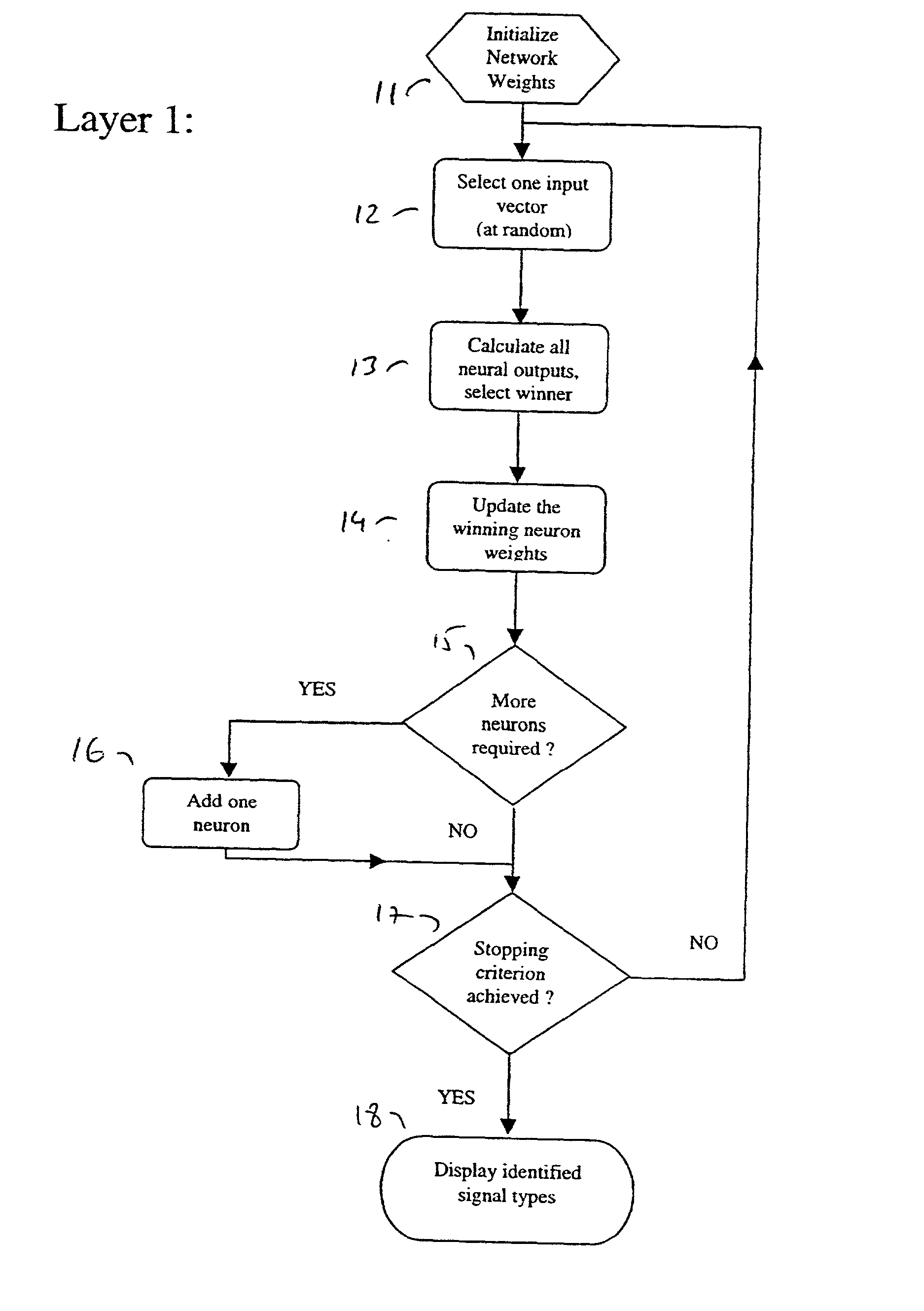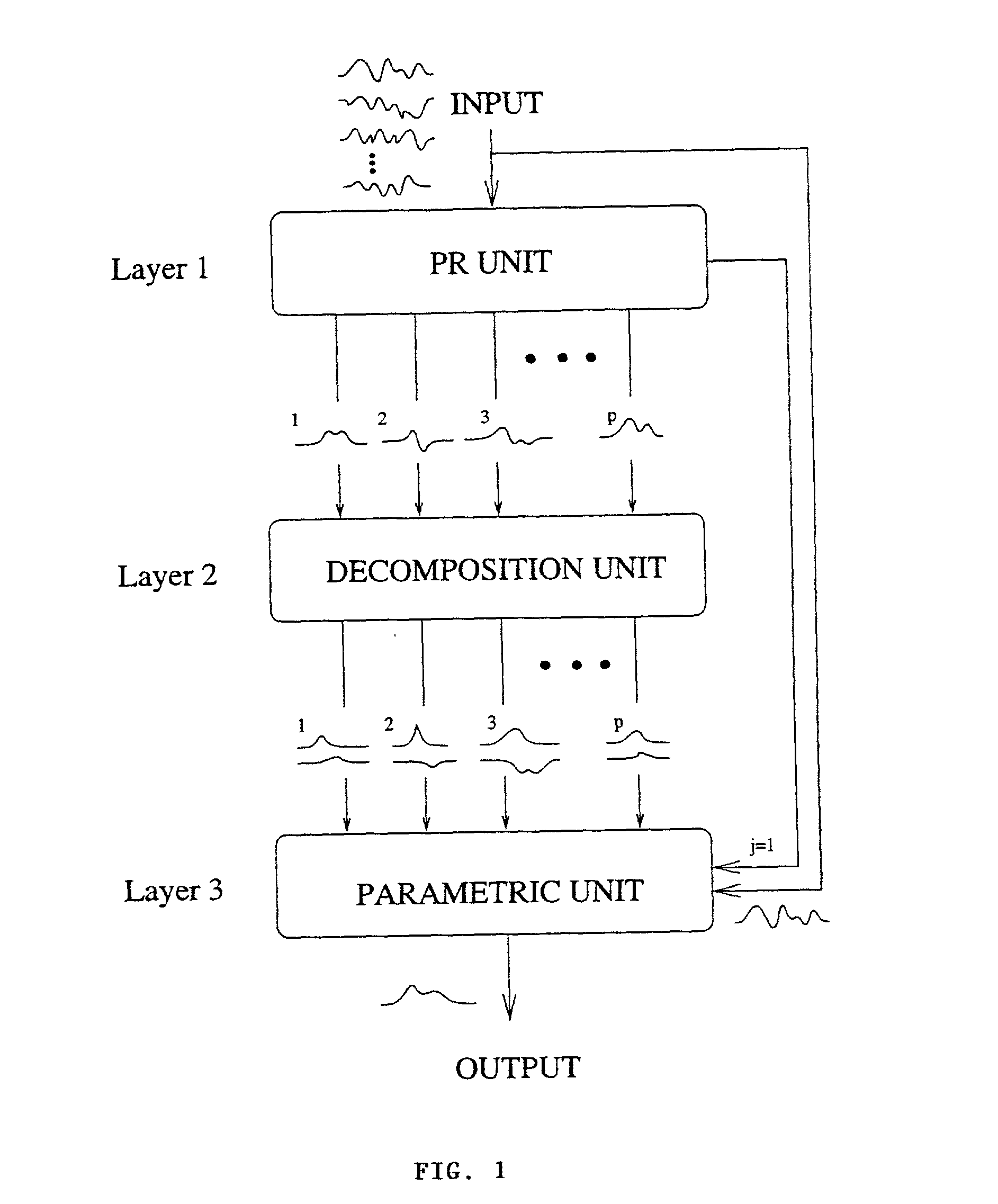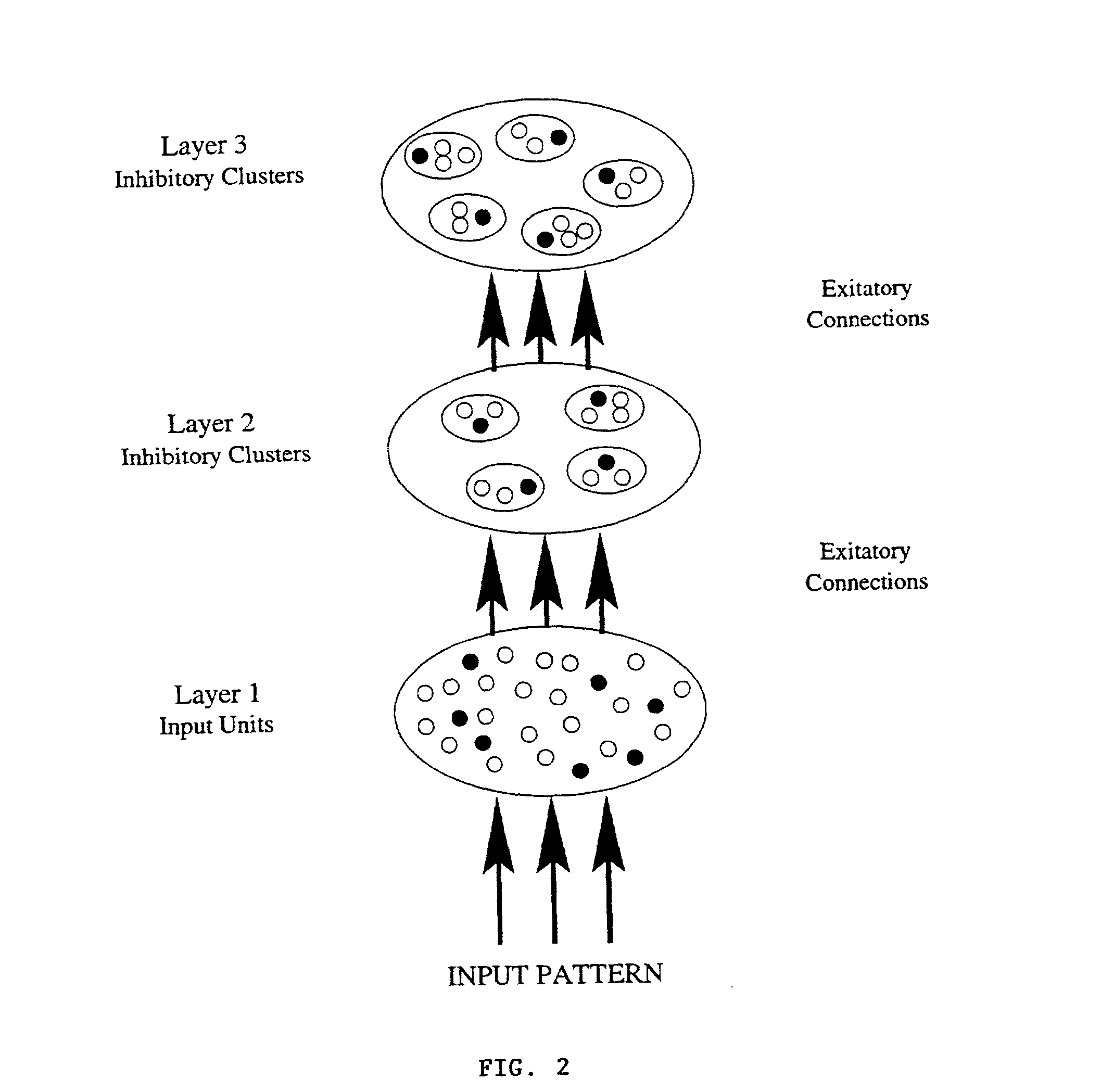The
decomposition problem of the global response into its constituent components cannot be solved without introducing constraints to reduce the dimensionality of this ill-posed inverse problem.
In practice, however, responses are never identical and trial to trial variability may in fact be quite substantial.
Several
estimation procedures have been recently proposed in attempt to improve the
signal to noise ratio of single
evoked potential measurements [e.g. Bartnik et. al., 1992; Birch et. al., 1993; Cerutti et. al., 1987; Lange & Inbar, 1996a; Spreckelsen & Bromm, 1988]; however, most of these methods assume constant wave-shapes of the single evoked responses and do not deal with variations of specific components within the EP compl
ex. Some methods are claimed to have the ability to track changes of the evoked responses, but the tracking is limited to global amplitude and latency variations of the entire complex, or at best to only small morphological variations of the EP compl
Two major problems are encountered in analyzing evoked brain potentials: the first stems from the extremely low
signal to noise ratio with overlapping spectra of the evoked responses embedded within the background EEG brain activity,
ranging from about 0 dB to -20 dB, depending on the type of evoked signals; the second problem concerns possible vectorial signal summation, resulting in componental overlap, which may cause partial or
total occlusion of the desired component features.
Obviously, averaging techniques are in conflict with the attempts to monitor rapid changes of evoked potentials, e.g. during movements with changing loads.
Other techniques were reported as capable of extracting morphologically variable evoked potentials, displaying some experimental results to demonstrate the performance [e.g. Cerutti at. al., 1988; Lange & Inbar, 1996a]; yet none of these methods have demonstrated tracking capabilities of specific components of the evoked potential complex.
Most publications have addressed the issue of improving the signal to
noise ratio of the averaged response rather than extraction of single brain responses, probably due to the objective difficulty of analyzing the faint evoked responses embedded within the spontaneous
cerebral activity.
The reasons for this apparent conservatism may vary--from the simplicity of averaging and the consistent results it produces, via limited technical resources of neurophysiologists to apply and assess complicated
processing methods, and to the questionable cost-benefit value in using the more advanced methods.
However cross-correlation methods are
highly sensitive to the fall of SNR, breaking down for SNR's lower than around 0 dB.
In addition, this method does not compensate for changes in response morphology which limits the analysis of variable responses.
Cross-correlation averaging was later expanded to allow shifts of single components, however this made the analysis even more sensitive to low SNR's and produced irregularities due to the artificial breaking of the signal into components.
Finally, several
classification methods have been recently proposed, however none of them is able to identify the embedded signals but only to categorize the recorded data [e.g. Clarson & Liang, 1987; Gevins et. al., 1986; Moser & Aunon, 1986].
Yet the success has been controversial mainly due to the inherent difficulty of spectral
estimation of the transient responses [Karlton & Katz, 1987].
These adaptive methods do not apply however to the analysis of transient EP's.
There is however a theoretical problem with the ARX model when used for EP extraction; the basic assumption claiming that a single response can be filtered out from the averaged response, by means of linear time invariant (LTI) filtering, is unrealistic due to the trial-varying nature of the evoked responses.
In addition, the autoregressive component which represents the ongoing EEG is imposed on the exogenous part, which prevents optimal solution of the EP filter.
However, the proposed implementation is novel, based on decomposing the noisy signals via decreasing scale.
A major problem lies in identifying the optimal scaling function .phi.(.chi.)=.alpha..sup.j.phi.(.alpha..sup.j.chi.) to fit the signals at hand, and a direct use of the average response is necessary to determine .phi.(.chi.).
A primary theoretical drawback is the critical assumption that any irregularities during the epoch must be related to the
specific time-locked task.
This is unlikely due to the wide-sense definition of an EP, as well as due to other various reasons like EMG artifacts or EEG irregularities.
The reported empirical results are hard to evaluate because identical stimuli were used yet large
estimation variances were obtained.
This method suffers from the same theoretical drawback as the previous approach, due to the inherent variability of the EEG signal.
The second category includes methods which attempt to reconstruct the EP by means of identification of statistical changes of the EEG signal over the transition from pre-stimulus to post-stimulus interval; these methods suffer from high estimation variances, probably due to physiological signal
contamination of the background EEG.
Generally a tendency towards parametric techniques is observed, as spectral methods are inadequate to deal with the spectral overlap of the EP and EEG at the unfavorable SNR characteristic of EP signals.
 Login to View More
Login to View More  Login to View More
Login to View More 


